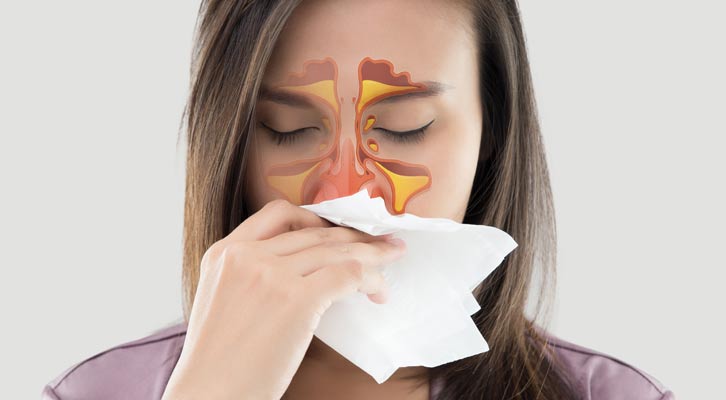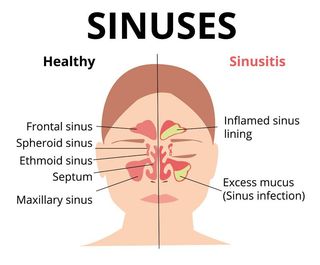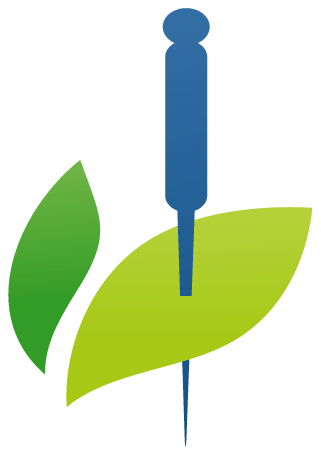Sinusitis
Sinusitis Treatment NYC by Marc Bystock L.Ac.
Call Marc Bystock L.Ac.
"In my clinical experience, whenever I’ve inserted acupuncture needles into facial and body points, the patient’s nasal passageways will open almost immediately. Facial swelling decreases and nasal drainage begins."
-Marc Bystock L.Ac.
Contact Marc Bystock, Leading Holistic Acupuncturist in NYC for a Free Consultation.
CONTACT MARC
VERIFY YOUR HEALTH INSURANCE
NYC Sinusitis Treatments by Marc Bystock NYC Acupuncturist in Midtown Manhattan NY 10016
What is Sinusitis?
Sinusitis is an inflammation of one or more of the paranasal sinuses. You have sinusitis when the tissue lining the sinus cavities swells with inflammation. Classified as acute, subacute or chronic, depending on the length of time the patient has experienced it. Acute is usually less than four weeks, subacute is 5-12 weeks and chronic is 12 weeks or longer. It is estimated that more than 35 million people per year in the United States alone are diagnosed with sinusitis.
The sinuses are hollow spaces located behind your nose, cheeks, and lower forehead. Sinuses are connected to your airway passages through an opening or ostium. You have four pair of sinuses:
- The frontal sinus is located in the forehead,
- The maxillary sinus is located behind the cheeks
- The ethmoid sinus is located between the eyes
- The sphenoid sinus is located deep behind the ethmoids.
Primarily they function to produce a thin layer of mucus. Mucus serves to keep areas moist like your nose, mouth, throat, sinuses, lungs and gastrointestinal tract. Secondly, it works like flypaper, helping to trap pollutants (smoke, smog, strong odors), dust and microorganisms such as bacteria, viruses and fungi from getting into the respiratory lining and tissue. Your sinuses are lined with cilia or tiny hairs that function to keep the mucus moving and drain out through your nose.
Because your sinus cavities are filled with air, they lighten the skull bones, improve the resonance of the voice, humidify and warm the air you breathe in, serve as shock absorption against structural impact and provide thermal insulation for the brain.
What Causes Sinusitis?
- Both acute or chronic respiratory infections
- Environmental allergies- may increase inflammation
- Food sensitivity allergies- may promote excess mucus production
- Certain pharmaceuticals (antihistamines)
- A deviated nasal septum
- A compromised immune system
- Nasal polyps-may block sinus pathways
- Nasal cancer
Many cases of sinusitis are viral related. Bacterial infections cause some cases. Fungi may internally inflame the sinus lining as well. These could also exist in combination with each other. Environmental toxicity or pollutants can also trigger inflammation and excess mucus production. A common cold could permit a secondary bacterial infection that turns into a sinus infection. Other causes may include any physical trauma to the facial tissue or bony structure.
What are the Symptoms of Sinusitis?
- The feeling of facial pressure and or pain. This is due to excess mucus build-up and inflammation of the tissue.
- Headache: This is from pressure from the blockage of the sinuses.
- Congestion: Nasal blockage from inflammation and mucus
- Postnasal drip: Overproduction of mucus that drips down the throat.
- Sore throat: The throat is irritated from mucus
- Toothache: From sinus pressure on surrounding nerves.
- Ear pain: Caused by sinus pressure on surrounding nerves.
- Eye pain: Caused by pressure on surrounding nerves.
- Cough: Reflex cough due to mucus production.
- Fatigue: Due to inflammation and immune response.
- Nasal discharge can be clear or whitish in non-infectious sinusitis.
- Bad breath may occur from bacterial infection.
How is Sinusitis Diagnosed?
- Diagnosis is usually performed through clinical observation.
- Nasal passages may be swollen and red.
- Drainage from the nasal passages may occur.
- Swollen eyes and or cheeks.
If the initial treatment fails, then an MRI or CT scan may be ordered to perform a more in-depth analysis and diagnosis. Also, an endoscopy may be performed to view the back of the nasal passages with a flexible fiber-optic tube. This diagnostic is appropriate to search for small growths and blockages.
What is the Conventional Medicine Treatment?
The most common bacteria to cause sinus infections include:
- Streptococcus pneumonia
- Haemophilus influenza
- Moraxella catarrhalis
- Staphylococcus aureus
- Streptococcus pyogenes
A course of antibiotics is usually prescribed for any bacterial infection. Decongestants and mucolytics may be offered to help dry up and move the mucus. In addition, sinus surgery may be prescribed. There are three basic sinus surgery procedures:
- Endoscopic sinus surgery: a small telescope is used to view the nose and sinuses.
- Image-guided endoscope: the endoscopic procedure as described above, is guided with the addition of a CT scan.
- Balloon sinuplasty: the sinuses are opened with the insertion of a balloon that becomes inflated.
As with all medical procedures, sinus surgeries may have some potential risks. Saline wash is a reasonable at-home procedure that may benefit most sinusitis sufferers. The Neti-pot or various saline solutions are either gently sprayed or irrigated into the nose to wash out dust and debris from obstructing the nasal passageway.
Acupuncture Treatments for Sinusitis
Whenever a patient comes in for acupuncture, it is essential first to identify the root cause of their symptoms.
Most cases of sinusitis are related to lung problems as the lung is expressed through the sinuses and nose in Chinese medicine. Other organs involved include the Gallbladder, liver, spleen, and stomach.
In addition to the organs above, the sinuses are traversed by multiple meridians, namely the large intestine, small intestine, triple warmer, Cv and the Du meridians.
Therefore, imbalances in any of the associated organs may affect the sinuses. The small intestine, bladder, liver, heart, kidney, gallbladder, stomach, lung, colon and the pancreas may all affect the functional quality of the sinuses. In my clinical experience, whenever I’ve inserted acupuncture needles into facial and body points, the patient’s nasal passageways will open almost immediately. Facial swelling decreases and nasal drainage begins.
Acupuncture stimulates the flow of qi or energy back to the affected area. Acupuncture lowers inflammation and boosts the immune response. Acupuncture should be an elective choice for anyone suffering from the ill effects of sinusitis.
The combination of acupuncture, herbs and dietary therapy will provide most sinus patients will long term relief. The etiology or causative factors will be addressed when using Chinese medicine. By changing the body’s “terrain,” symptoms can be alleviated permanently.
Contact NYC Acupuncturist Marc Bystock L.Ac. for Free Consultation Regarding Your Sinusitis Treatments.
My name is Marc Bystock. I’ve been practicing acupuncture, Chinese medicine, and nutrition since 1996. I specialize in the practice of acupuncture for disorders of the eyes, ears, nose and throat.
If you or anyone you know suffer from sinusitis then, I urge you to contact me to set an appointment or a consultation as soon as possible. My passion is helping you to reach optimal health!
Please contact me
today for a free consultation.
Additional Links
Treatment Hours
- Monday
- -
- Tuesday
- -
- Wednesday
- -
- Thursday
- -
- Friday
- -
- Saturday
- -
- Sunday
- Closed
Copyright 2019 Marc Bystock All Rights Reserved. Art licensed by Shutterstock







